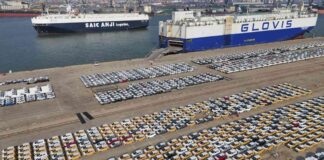Reviving African Railways Through Critical Minerals Demand
Southern Africa’s railways are experiencing a resurgence in global attention and attracting significant investment, driven by the increasing demand for critical minerals needed for the energy transition. From the west coast of Angola to the east coast of Tanzania, governments and investors are working to rejuvenate existing rail infrastructure and construct new rail networks. The central African copper belt, shared by Zambia and the Democratic Republic of Congo, is a focal point for the surge in freight demand.
The Need for Revitalization
Years of neglect and underinvestment have left many of southern Africa’s rail lines in disrepair, despite the growing demand for trade routes for critical materials used in the production of electric vehicles. The region faces a $10 billion backlog for maintenance and track refurbishment, highlighting the urgent need for infrastructure upgrades to support the transportation of essential minerals.
Investment Opportunities
The revitalization of African railways presents lucrative investment opportunities for both domestic and international stakeholders. Governments and private sector entities are exploring partnerships to secure funding for rail projects that will enhance connectivity, improve logistics, and facilitate the efficient transportation of critical minerals to global markets.
Key Players in the Rail Revival
At the forefront of the rail revival efforts are organizations such as the Southern African Railways Association, which plays a pivotal role in coordinating industry initiatives and promoting collaboration among stakeholders. Public-private partnerships, development financiers, and multinational corporations are also actively involved in supporting rail infrastructure projects across the region.
Challenges and Opportunities
While the surge in interest and investment in African railways is promising, there are challenges that must be addressed to ensure the success of these initiatives. Securing funding, mitigating risks, and aligning project objectives with sustainable development goals are critical factors that require careful consideration. By leveraging the expertise and resources of various stakeholders, the railway industry in Africa has the potential to drive economic growth, enhance trade connectivity, and support the transition to a sustainable energy future.
In Conclusion
The revival of African railways through the demand for critical minerals represents a significant opportunity to transform the region’s transportation infrastructure and unlock economic potential. With strategic investments, collaborative partnerships, and a commitment to sustainable development, African countries can build a modern and efficient rail network that serves as a catalyst for growth and prosperity. As the global demand for critical minerals continues to rise, Africa’s railways are poised to play a crucial role in meeting these challenges and driving sustainable development across the continent.






















